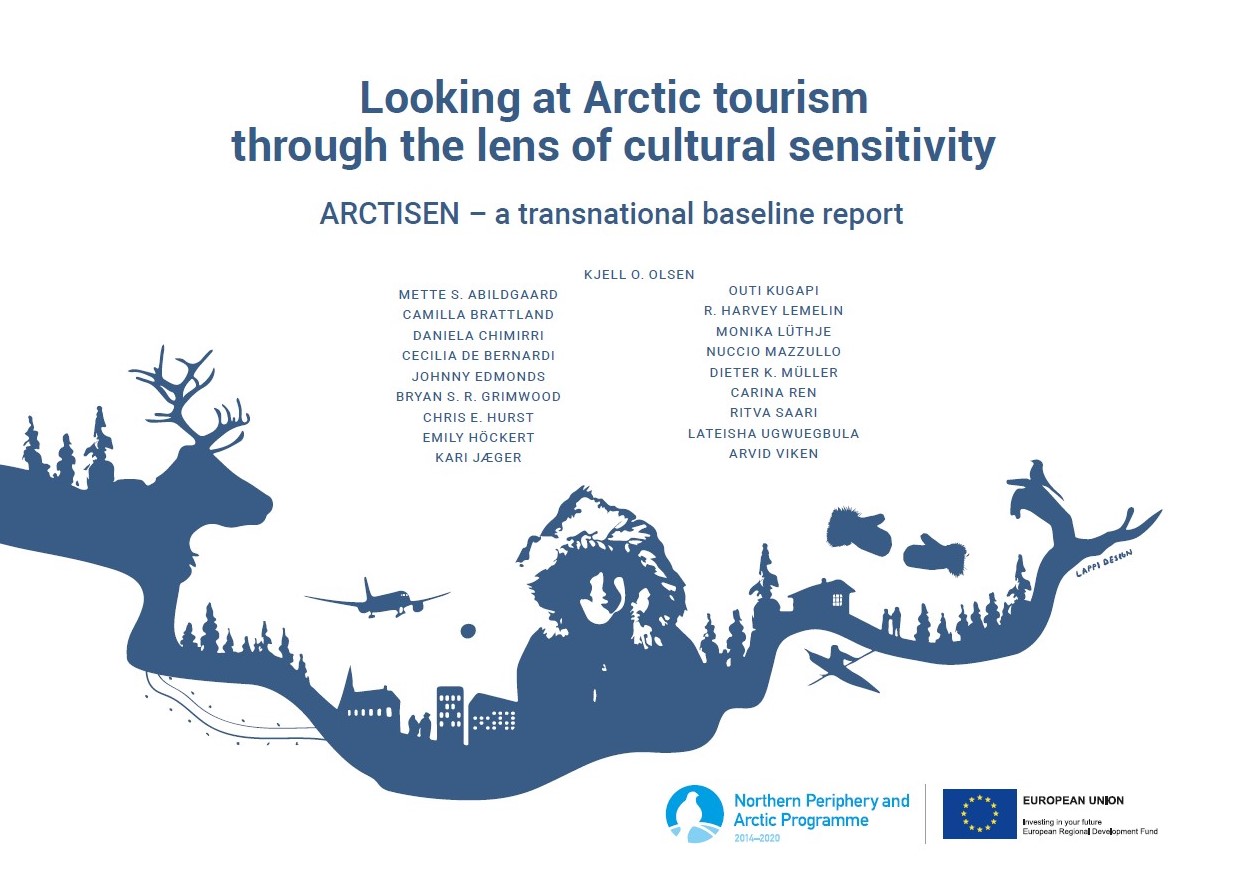Text: ARCTISEN Team
NEARLY HUNDRED INTERVIEWS ACROSS THE ARCTIC
Little more than one year ago, members of our ARCTISEN team were travelling across the Arctic conducting interviews among start-ups, small and medium-sized enterprises (SMEs), local destination management organisations (DMO) and other tourism actors. All together 13 interviews were conducted in Greenland, 23 in Norway, 18 in Sweden and 44 in Finland, while Canada’s research focused on existing guidelines on cultural sensitivity.
The interviews included questions about business environments, product development and needs for capacity building. These discussions formed an important part of the project’s Work Package 1 – ‘Baseline studies on cultural sensitivity’, led by the Arctic University of Norway. Together with desk-studies, the interviews enabled us to form a picture of the visions and needs across the project area and to create the road-map for future project activities, such as, benchmarking trips, workshops and educational materials.
TRANSNATIONAL REPORT
An overreaching summary of these studies was published at the end on the year 2019 with title Looking at Arctic tourism through the lens of cultural sensitivity: ARCTISEN – A Transnational Baseline Report. The report offers cross-national comparisons to understand the multiple ways of drawing on place-based cultural resources in Arctic tourism. It also seeks to answer to the question of ‘What does cultural sensitivity mean?’ or ‘In which ways can Indigenous peoples and other local communities utilize their cultural heritage and contemporary life in creating successful tourism products and services

NATIONAL REPORTS
Today we are happy to launch five, more detailed, national reports on culturally sensitive tourism! All these reports can be found through our website or by following this link. We believe that the reports can provide new insights, support and inspiration to tourism entrepreneurs, developers, DMO’s, students and researchers working with tourism is the Arctic. These reports will be also used in the forthcoming online course that the project will aim to launch by the end of the year.
The Swedish report highlights the situation for the entrepreneurs operating in tourism, both from a Sámi  perspective and from other local and non-local stakeholders. Based on the interviews, there are several issues that have been identified connected to the expansion of tourism. One is sustainability, but also the use of culture in tourism and different structural problems related specifically to tourism entrepreneurship.
perspective and from other local and non-local stakeholders. Based on the interviews, there are several issues that have been identified connected to the expansion of tourism. One is sustainability, but also the use of culture in tourism and different structural problems related specifically to tourism entrepreneurship.
The report from Norway approaches community participation in Sámi tourism in Norway and its relationship with cultural sensitivity. It questions, for example, in which ways can Indigenous peoples and other local communities utilize their cultural heritage and contemporary life in creating successful tourism products and services.
The Finnish report (both in Finnish and English) offers an overview of tourism development in Finnish  Lapland with a focus on cultural sensitivity and seeks an answer, for example, to this question: How could cultural sensitivity be enhanced, and what kinds of challenges might it present? The report has a special emphasis on the Sámi cultures.
Lapland with a focus on cultural sensitivity and seeks an answer, for example, to this question: How could cultural sensitivity be enhanced, and what kinds of challenges might it present? The report has a special emphasis on the Sámi cultures.
The report from Greenland examines  ongoing tourism development through the lens of cultural sensitivity, offering an overview of the tourism landscape in Greenland, with a particular emphasis on Nuuk and Sisimiut. The report discusses, for instance, how local communities and businesses can utilise their cultural heritage and contemporary way of life in creating successful tourism products and services.
ongoing tourism development through the lens of cultural sensitivity, offering an overview of the tourism landscape in Greenland, with a particular emphasis on Nuuk and Sisimiut. The report discusses, for instance, how local communities and businesses can utilise their cultural heritage and contemporary way of life in creating successful tourism products and services.
The report from Canada examines existing guidelines or certificates for culturally sensitive tourism and attempts to assess guideline use by tourism businesses with cultural experience offerings in the Canadian Arctic. Based on a review of formal agreements, guidelines, and business websites, the report found potential opportunities for tourism development within formal agreements with Indigenous nations, and a lack of conclusive evidence for the application of existing guidelines by tourism businesses in the Canadian Arctic, and specifcally within Yellowknife, Northwest Territories.
Many thanks to all of you who participated in the interviews and helped to bring these reports into life! Please feel free to share and distribute them further.
Best wishes,
ARCTISEN Team
